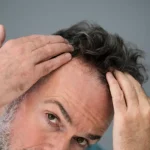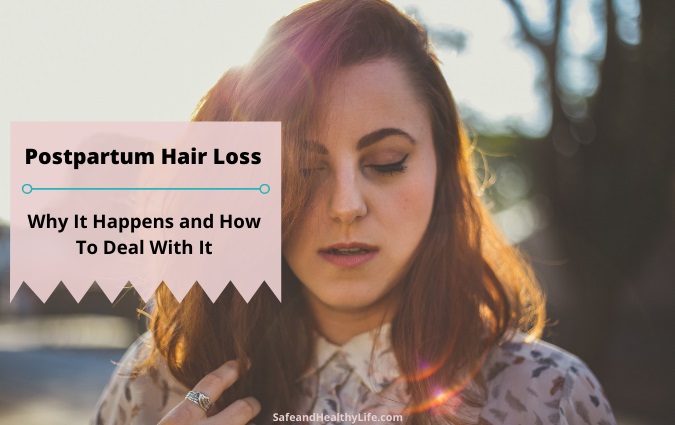
There are plenty of reasons why we love babies. That intoxicating, sweet, natural scent when you sniff the top of their heads.
Those little itty-bitty toes that are nibble worthy and the adorable tiny booties and socks that go over those toes. The toothless grins that melt your heart, even though they’re probably gas-induced.
That moment when they suddenly grab onto your finger and won’t let go. The stinkin’ cute outfits that make you want to dress them up all the time.
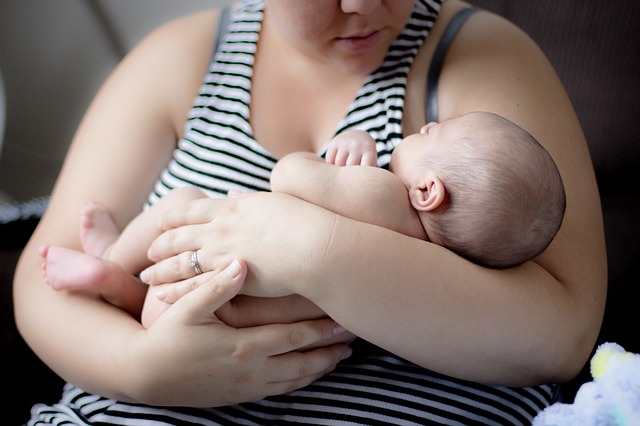
These things make the seemingly endless sleepless nights, poop explosions, and mommy brain worth it. But there are not-so-fun parts of recovering from childbirth. Sore nipples are no joke.
Postpartum depression is real. And when you start shedding hair at an alarming rate, that can be unexpected and scary.
What Is Postpartum Hair Loss?
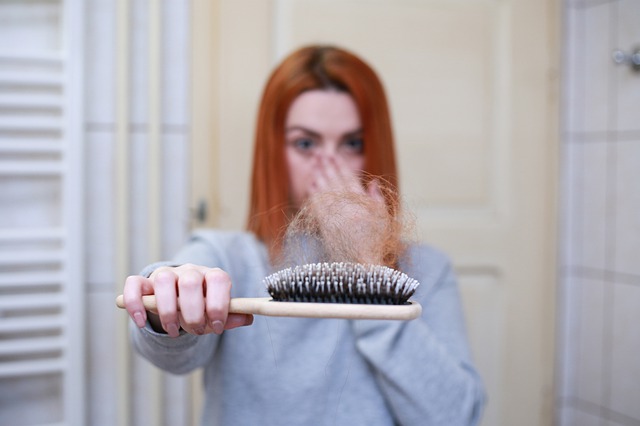
Weeks to months after pregnancy, you may start noticing clumps of hair in your hairbrush and find that you have to unclog your shower drain more often.
Postpartum hair loss refers to excessive shedding of hair after giving birth. While this is a common occurrence, it can worsen for some women, which can be very distressing. The hair loss is believed to be caused by hormone levels returning to normal after being pregnant.
Why Does It Happen?
A woman’s body experiences elevated levels of estrogen and progesterone during pregnancy.
Estrogen affects many systems, including the hair and skin (hence why many women get smoother, glowy skin and lusher locks).
This is commonly referred to as the ‘pregnancy glow’. The changes in hair quality can be credited to the way the hormone affects the hair growth cycle.

Each strand of hair goes through a cycle of renewal that is made up of three phases. It starts with the growth phase, where the hair actively increases in length.
Next is the transitional phase, where the hair stops growing and a club hair forms. The final stage, the resting phase, is where the club hair rests in the root as the new hair grows beneath it. It eventually falls out, and new hair takes its place.
Increased estrogen causes the hair to remain in the growth phase longer than usual, leading to more growth and less hair shedding (on average, we shed 50-100 hairs a day). After childbirth, the levels of estrogen and other hormones drop back to pre-pregnancy levels.
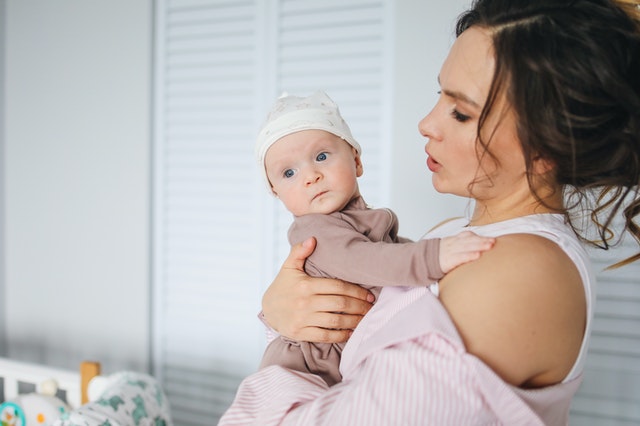
This drop causes many hair follicles to rapidly progress from the growth phase into the resting phase as the renewal cycle normalizes.
Pair this with reduced sleep, lack of a proper diet, and the demands of taking care of a newborn, and you’ve got conducive conditions for excessive hair loss.
When Does Postpartum Hair Loss Occur?
The increased hair fall can occur anywhere from one to six months after childbirth and can last up to another five months after that. Hair typically returns to its pre-pregnancy condition by the time the baby turns one.
If you feel the hair loss is concerning and has not slowed down 12 months after your child’s birth, feel free to seek medical advice.
Is It Common?
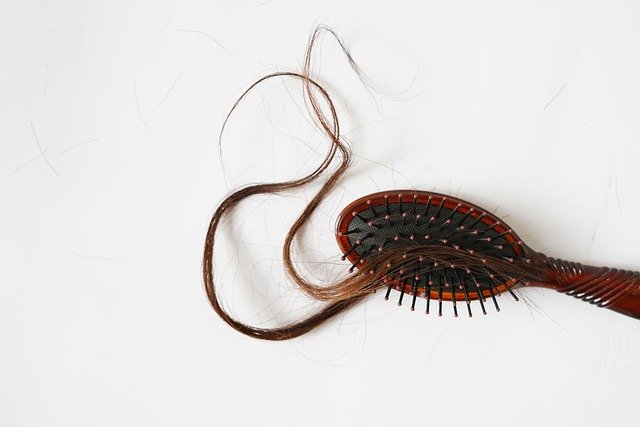
According to the American Pregnancy Association, postpartum hair loss affects between 40-50% of women. How much hair you lose can vary from pregnancy to pregnancy.
The loss is temporary; if your hair doesn’t return to normal shedding after the one-year mark, it could be a symptom of an underlying health issue like an iron deficiency, hypothyroidism, or alopecia.
Is There Treatment For Postpartum Hair Loss?
Unfortunately, there’s no set treatment for postpartum hair loss. Once your hair has progressed from the extended growth phase into the resting phase, there’s not much you can do to keep it from falling out.

However, there are measures you can take to ensure the shedding doesn’t go on for longer than it should and healthy growth of the new hair.
- Diet. What you eat plays a significant role in the health of your hair. Hair is mostly composed of keratin protein; hence a protein-rich diet is essential. Foods rich in L-lysine (like beans, eggs, and cottage cheese), vitamins D and B12 are excellent additions to a well-balanced diet.
- Avoid tight hairstyles and using heat. Hair follicles are very fragile when in the resting phase. Avoid premature hair loss by staying away from tight braids, ponytails, and anything that puts too much stress on the follicles. Take a break from heat styling tools as they can weaken the hair shaft. Be gentle when brushing your hair. Use a silk pillowcase to reduce tugging and pulling of your hair while you sleep.
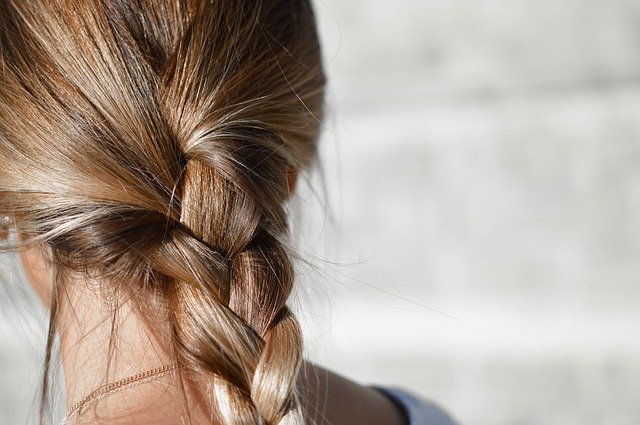
- Use volumizing products made for fine hair. These products are lightweight and have added ingredients like keratin that make the hair appear fuller. Stay away from products with labels like “conditioning shampoo” and “intensive conditioner” as they can be heavy and weigh the hair down, making it look limp.
- Minimize stress. This is easier said than done, especially when caring for a baby. It’s essential to keep the stress levels down because cortisol, a hormone released to help your body deal with stressful situations, can negatively affect your hair growth cycle. Find moments in the day where you take time out just for you. Give yourself a head massage. Try a gentle exercise like postnatal yoga and meditation.
Hairstyling Suggestions For Dealing With Postpartum Hair Loss
Here are four easy hairstyling suggestions that are not only easy to do but also look very chic.
1. Use Temporary Hair Extensions
To get instant volume and thickness, opt for temporary extensions that don’t put any tension on the roots of your hair. Halo hair extensions work best because they’re non-damaging to hair follicles. The transparent wire that holds the weft fits snugly around your head without pulling on the roots and gives you a fuller look in a matter of minutes.
2. Keep It Up
Updos, buns, and ponytails do a good job of covering up bald spots. Instead of a sleek, tightly pulled back hairstyle, opt for a loose updo that doesn’t pull on your hair follicles. For minimal breakage, don’t “Overtease” the hair.
3. Get A Blunt Haircut
Also fondly referred to as the ‘Mom Bob,’ if done correctly, a blunt haircut can breathe new life into limp hair. Blunt ends give the illusion of fullness and weight. Keep layers at a minimum to preserve the body of the look. Use a volumizing mousse or spray to give some lift at the roots.
4. Experiment With Boho Headbands
Headbands come in all sorts of styles, from fun prints to vibrant florals. They are great for concealing thinning hair at the temples. Get elastic or stretchy headbands that will go across the back of your head. Pick fabrics that are kind to your hair, like silk or satin.
About The Author:
Emily Weber works with the popular Swiss hair extension brand, Rubin Extensions. She’s previously worked as a freelance writer in all things beauty, hair, and fashion. In her downtime, she loves to travel, bake, and the occasional pilates workout to balance it all out.




